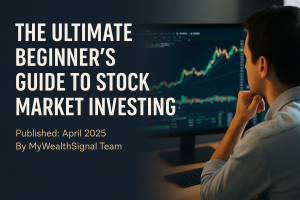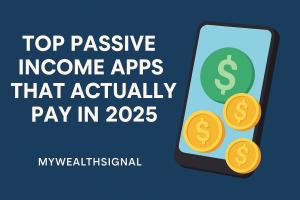When beginners encounter the vocabulary of investing, they may feel they’ve wandered into a foreign city where even street signs speak another tongue. Learning that lexicon not only eases navigation but also reveals how professionals frame problems and opportunities. Rather than a rote glossary, consider this tour through foundational concepts as a stroll through neighborhoods where each term lives and breathes.

ARTICLE
Equity is the starting point, denoting ownership interest in a company. Holding equity means sharing in profits through dividends and enjoying potential price appreciation. Yet it also implies assuming residual risk; creditors collect first if liquidation looms. Understanding this hierarchy clarifies why bond yields may remain stable while the same company’s share price gyrates wildly.
Market capitalization, or market cap, translates equity into scale by multiplying share price by outstanding shares. It allows apples‑to‑apples comparison between firms regardless of nominal price. Categorizing companies into large‑cap, mid‑cap, and small‑cap becomes shorthand for discussing stability, growth potential, and volatility levels associated with different sizes.
Initial public offering, shortened to IPO, marks the event when a privately held company offers shares on a public exchange. The process raises capital and creates liquidity for early investors, yet it also subjects the company to regulatory disclosure. Watching an IPO calendar teaches how capital market sentiment ebbs and flows; brisk pipelines often coincide with bullish phases.
Dividends represent cash paid from profits to shareholders, typically quarterly. Yield expresses dividends as a percentage of the current share price, helping investors compare income streams across securities. Firms with uninterrupted dividend increases over decades earn positions on lists like the Dividend Aristocrats, signaling operational resilience.
Ex‑dividend date is the cutoff for receiving the upcoming dividend. Purchase a share one day after the ex‑dividend date and the payment goes to the seller. Awareness of this nuance prevents confusion when a share price drops by approximately the dividend amount on the ex‑dividend morning.
Earnings per share (EPS) divides net profit by shares outstanding, offering a per‑unit measure that facilitates comparison across firms. Analysts track EPS trends to judge whether management consistently expands profitability. Adjusted EPS may exclude one‑time charges, prompting scrutiny lest adjustments mask chronic issues.
Price‑to‑earnings ratio (P/E) contextualizes valuation by comparing price with EPS. High P/E suggests optimism for future growth or an overvalued stock; low P/E could indicate a bargain or a company in decline. Interpreting P/E therefore requires industry context and growth forecasts.
Beta quantifies volatility relative to the broader market. A beta of 1 .2 implies the stock tends to move twenty percent more than the index in either direction. Portfolio managers mix high‑beta and low‑beta names to target specific risk profiles.
Liquidity refers to the ease of buying or selling without moving the price. Blue‑chip stocks boast deep liquidity, whereas micro‑caps may experience wide spreads and limited volume. Liquidity shapes execution strategy and the size of positions prudent to hold.
Spread is the gap between bid and ask prices. Narrow spreads indicate active trading and low transaction costs; wide spreads warn of potential slippage. In fast markets spreads can widen abruptly, catching inattentive orders off guard.
Short selling involves borrowing shares to sell now, hoping to repurchase them later at a lower price, returning them to the lender and pocketing the difference. Short interest expresses the percentage of shares sold short. An elevated short interest signals bearish sentiment but also sets the stage for short squeezes if the price rises and shorts scramble to cover.
Margin account permits borrowing from the broker using portfolio assets as collateral. Leverage magnifies returns and losses, and margin calls force liquidation if equity falls below maintenance levels. Understanding margin mechanics is crucial before toggling the feature on.
Stop‑loss order instructs the broker to sell if the price falls to a specified level, limiting downside. Variations include stop‑limit orders which convert into limit orders rather than market orders when triggered, offering price control at the risk of non‑execution in fast‑moving markets.
Market order executes immediately at best available price; limit order sets a maximum purchase price or minimum sale price. Mastery of order types refines execution and reduces inadvertent slippage under volatile conditions.
Candlestick is a chart representation showing open, high, low, and close for a period. Patterns such as dojis or engulfing candles form part of technical analysis lore, though practitioners combine them with broader context rather than treating them as magical predictors.
Moving average smooths price data, revealing trends by averaging a set number of periods. Crossovers between moving averages of different lengths often signal momentum shifts. Long‑term investors watch the two‑hundred‑day average as a barometer of secular direction.
Volatility index, or VIX, derived from option prices on the S&P 500, measures expected market turbulence over the coming thirty days. Nicknamed the “fear gauge,” it spikes during crises and subsides during calm periods. Elevated VIX levels sometimes present buying opportunities to contrarian investors.
Looking past the alphabet soup, each term acts as a navigational coordinate. Mastering them does not guarantee success, yet it confers fluency, enabling richer conversations, sharper analysis, and decisive action unclouded by unfamiliar jargon.
More Related Articles Below

With easy cash-out options, get your earnings quickly and efficiently. Whether it’s gift cards from top brands or real money rewards, Cash’em All has got you covered. With easy cash-out options, get your earnings quickly and efficiently.With easy cash-out options, get your earnings quickly and efficiently. Whether it’s gift cards from top brands or real money rewards, Cash’em All has got you covered. With easy cash-out options, get your earnings quickly and efficiently.
Copyright © 2025 My Wealth Signal. All rights reserved.






